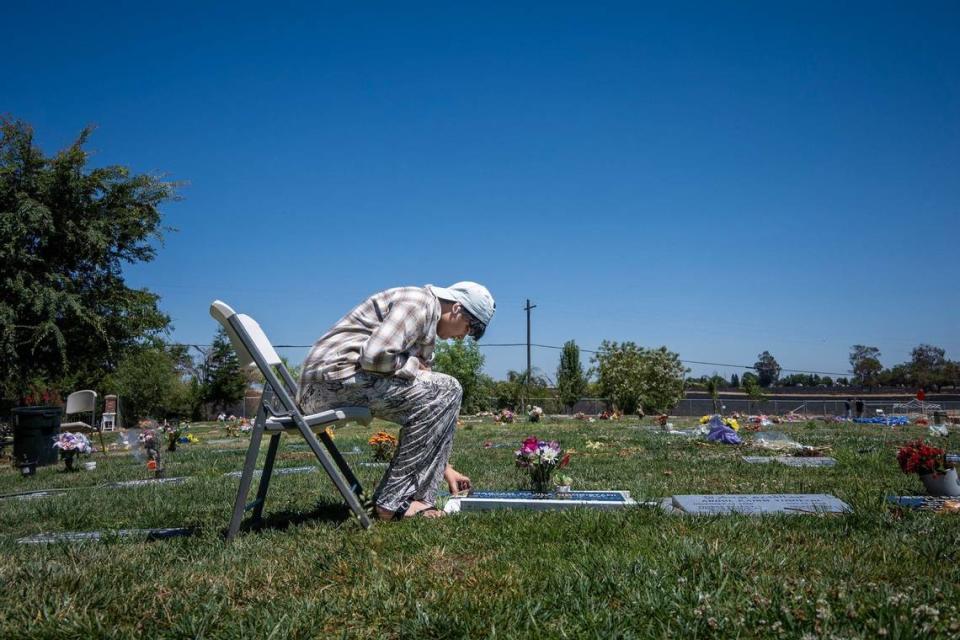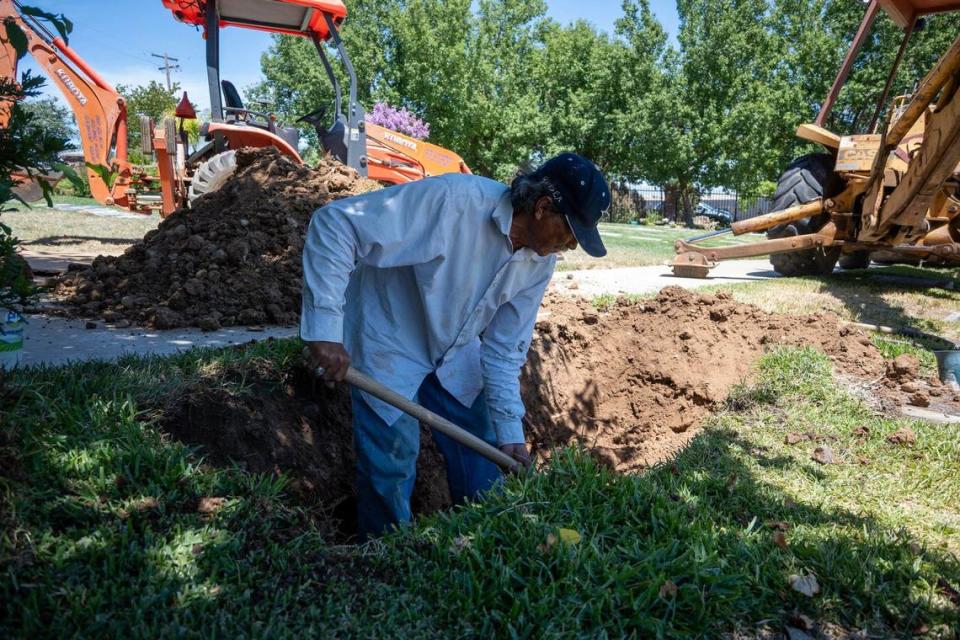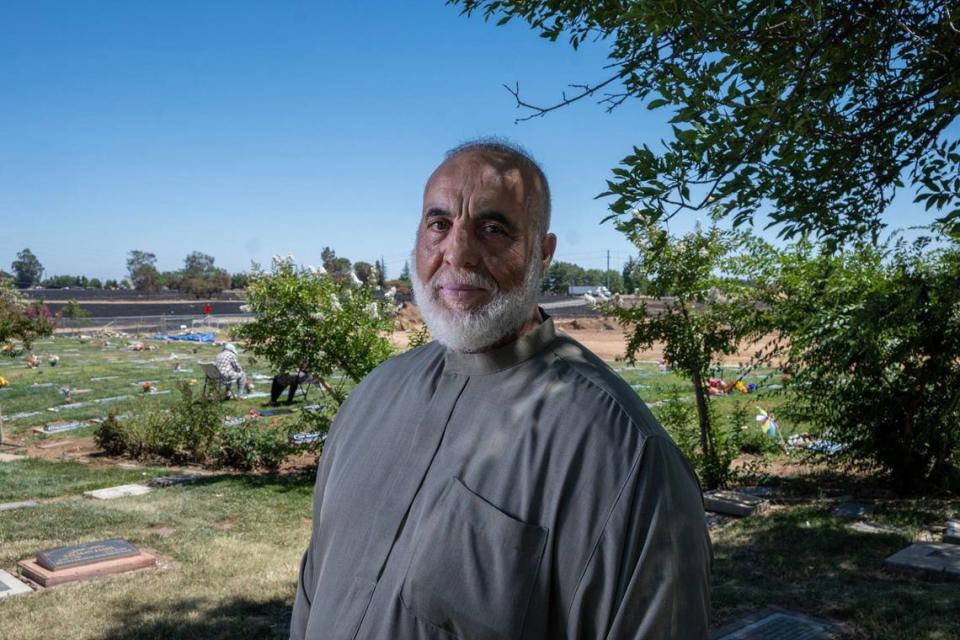‘This life is really temporary’: From Muslim to Buddhist, how Sacramento cares for the dead
Historic cemeteries abound from neighborhood to neighborhood, headstones rising out of dry clean-cut grass.
One, however, sits about 15 minutes outside of city limits, at the intersection of Jackson Road and Eagles Nest Road just south of Mather. Here, we find the area’s only Muslim cemetery.
The Greater Sacramento Muslim Cemetery, which held its first burial in 2000, serves a growing faith community in which it is a religious requirement to be buried among other Muslim believers. The next closest Muslim cemetery is located about 40 minutes away in Lodi.
Many built within the last few decades, religious interment sites and spaces for remembering the deceased have become invaluable to expanding communities beyond the predominantly Protestant and Catholic population of Sacramento. Though they may not be as numerous as the dozens of Christian and multifaith cemeteries scattered throughout the county, these spaces are critical for honoring a key part of human existence — passing on from this world.
“It gives me an opportunity to comfort people who have been disheartened, who are grieving,” Salem Ammar, cemetery manager at GSMC, said about his role. “I enjoy it. I try my best to comfort them, to remind them that this life is really temporary.”
So when the Excelsior Fire was moving fast through the same dry grasslands where the cemetery is located in mid-June, caretakers and firefighters moved fast to protect the site.

Protecting the cemetery at all costs
Crowds of people clustered between rows of grave plaques at the Greater Sacramento Muslim Cemetery on June 16, the same day as Eid al-Adha, one of the most important Islamic holidays of the year. It’s a day when many Muslims take time to visit loved ones, including those who have passed.
But that same day, the Excelsior was eating up building structures and charring hundreds of acres of earth a sooty black.
“I was speaking with a tractor operator and then I started seeing that the fire started approaching us rapidly, very fast,” said Salem Ammar, the cemetery manager. “So I told him, ‘My friend, get down and let’s go, let’s evacuate.’ I started telling people to go away.”
At around the same time, Ammar saw a police cruiser enter the cemetery parking lot. The officer who got out of the car also began telling visitors to evacuate.
Firefighters worked to curb the fire before it could overtake the cemetery, eventually containing it fully by the next morning. In total, the fire had covered nearly 900 acres, blazing through the fields surrounding the cemetery but leaving the site untouched.
“We want to express our gratitude to the first responders, as a manager of the cemetery, but also on behalf of the Muslim community,” Ammar said.

Buried among believers
Though some contemporary institutions of Islamic law view it permissible to bury Muslims in Muslim sections or even among other faiths in non-Muslim graveyards, these instances only occur as a matter of necessity.
“This was an idea that was a brainchild of several senior community members that had seen a gap where they really wanted to have a cemetery exclusively for the Muslims of the greater Sacramento area,” said Farrukh Saeed, chairman of the board of trustees for GSMC.
However, Ammar noted that if a family comes to GSMC with a request for burial, the cemetery managers do not take pains to verify they are Muslim and instead will take family members at their word.
At GSMC and other Muslim cemeteries, the bodies of the deceased are first washed and then prayed over in preparation for the burial. Afterwards, they are wrapped in a simple white sheet before being laid to rest in the earth.
Space usage at the cemetery has been on the rise throughout the years, both Saeed and Ammar said. The Muslim community in Sacramento has expanded due to influxes of refugees and asylum seekers from Syria, Iraq and Afghanistan.
Sacramento County, one of the most diverse counties in California and even across the U.S., was home to an estimated 37,000 Muslims as of 2020, according to the Association of Religion Data Archives. The number is likely higher now, years after the U.S. withdrawal from Afghanistan.
In 2021, about 9,700 Afghan people lived in Sacramento County — more than anywhere else in the country. Another 2,000 lived nearby in Yolo, Sutter, Placer, and El Dorado counties. An additional 1,700 Afghan refugees were expected to settle in the Sacramento area by the end of year.
The cemetery plays such a vital role in Sacramento’s Muslim community, Ammar said, that people began to recognize the main gravedigger outside of the cemetery in public.
“He became a fixture,” Ammar said. “People know him, like (a) celebrity.”
About 250 people on average are now buried in the cemetery every year.

Cemeteries offer sacred spaces
Matt Hamasaki is a reverend at the Buddhist Church of Sacramento, a temple belonging to a Japanese branch of Buddhism called Jodo Shinshu. While many of the temple’s members are interred at the East Lawn Memorial Park in Elk Grove or Sacramento Memorial Lawn, Hamasaki said some members are choosing a relatively new option — to be interred at the church.
When the temple began offering the option to purchase niches in 2014, it had to use a lottery system to apportion space because the number of people who applied was greater than the number of niches available.
“The previous generations had a lot of foresight for their own deaths and helping out their children when that time came, and so they would purchase plots to be buried in well before they were on their deathbed,” Hamasaki said. “So the places that they bought were not at the temple, whereas perhaps, had they known that that was going to happen, they would have waited or purchased it there.”
He said temple leaders are starting to see interment at the temple become more popular now that it has become an option.
Hamasaki also pointed to Obon, an annual Japanese Buddhist holiday coming up in mid-July or August that commemorates the dead, as a cultural example of honoring deceased loved ones that is not necessarily tied to a physical place, such as burial grounds.
One of the largest Obon festivals in the U.S. is held in San Jose, drawing tens of thousands of participants. The Buddhist Church of Sacramento will also be hosting events to celebrate Obon.
“Supposedly, the spirits come back, and it’s more of a celebration rather than a somber thing,” Hamasaki said.
Some of GSMC’s caretakers and stewards have been involved in the cemetery for decades. And as far as space goes, GSMC’s current acreage will likely allow an entire generation to be buried on the grounds within the next several decades to come.
Ammar said he and other cemetery caretakers have considered visiting the fire and police departments with dozens of donuts and flowers or writing letters of gratitude for their work in saving the cemetery.
“We express our deepest appreciation to the first responders,” he said. “The one who does not thank people does not thank God.”

